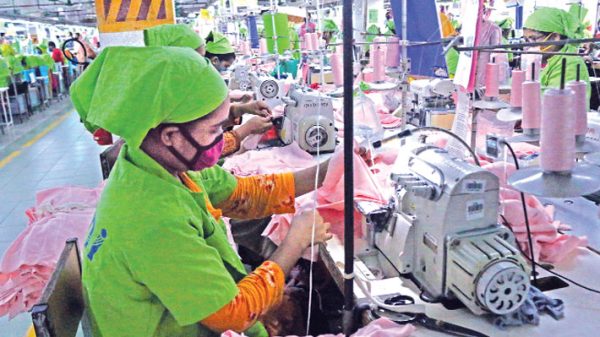A real boon to economy

- Update Time : Saturday, July 22, 2023
- 25 Time View

Rising apparel shipments to non-traditional markets offer a new ray of hope for the country’s export sector amid the global economic crisis.
Despite falling global demand and an energy crisis, Bangladesh witnessed a 10 percent growth in RMG exports in FY23, with increased exports to new markets playing a significant role.
In the recently concluded fiscal year, ready-made garment exports soared by more than 31 percent year-on-year, according to industry data.
In contrast, RMG exports to the largest single market, the US, and the second largest single market, Germany, declined. Exports to the largest market, the EU, did rise albeit at a slower pace.
Exports to the 27-country bloc, the EU, grew by less than 10 percent while declining by nearly 7 percent in Germany and almost 6 percent in the US market.
“We aim to reduce our overdependence on traditional markets. Initiatives have been taken targeting the Middle Eastern and African markets,” said Bangladesh Garment Manufacturers and Exporters Association (BGMEA) President Faruque Hassan.
He mentioned that research is underway to evaluate their demand and types of seasonal demand. He hopes that apparel exports to these new markets will further grow in the future as regular contact is maintained with businessmen and diplomats.
Bangladesh secured $8.37 billion from garment exports in these relatively new markets, the highest in three years.
In the previous two fiscal years, the figures were $6.37 billion and $5.08 billion respectively. As a result, these markets’ share rose to 18 percent in FY23, up from 15 percent in FY22.
On the other hand, the traditional market, the EU’s share, dipped slightly to 50.07 percent from 50.22 percent a year ago, while the US market’s share fell to 18 percent of total apparel exports, down from 21 percent in the previous year.
In a bid to diversify export markets, the government is providing a 4 percent cash incentive on exports to non-traditional markets, a move reflected in the rising exports to these regions.
Typically, the US, EU and Canada are viewed as traditional markets while key emerging markets include Japan, India, China, Russia, Turkey and Australia.
Among the non-traditional markets, India is seen as the most potential destination with RMG exports crossing the $1 billion mark for the first time in FY23. Exports there grew by 42 percent to $1.01 billion from $720 million in FY22.
Last year, RMG exports saw a 46 percent growth in the largest emerging market, reaching $1.6 billion, up from $1.10 billion in FY22. Exports also crossed the $1 billion mark in the Australian market with a 42 percent increase.
RMG exports to Australia rose to $1.16 billion from $810 million in FY22. For Russia and Chile, exports surged in most of the new markets.
“Non-traditional markets have turned out to be increasingly important than ever for the RMG industry of Bangladesh,” BGMEA Director Mohiuddin Rubel said.
Bangladesh’s RMG exports to non-traditional markets showed a significant growth in the last four years. Exports to the new markets registered a 21.76 percent growth in FY19 from $4.7 billion in FY18 to $5.7 billion.
However, exports witnessed a negative growth of 15.95 percent in FY20 mainly because of the Covid-19 pandemic which had massive impacts on the global trade, including apparel exports. But the growth in FY 2020-2021 went up again by 6.36 percent compared to the previous year.
In FY 2021-2022, exports to the non-traditional markets grew significantly by 25.40 percent than FY 2020-2021, from around $5 billion to $6.4 billion.
“Diversification is the reason why Bangladesh should explore non-traditional market as much as possible. Diversifying for non-traditional markets helps reduce dependence on traditional markets and provides a buffer against market fluctuations and changes in demand,” Rubel added.
Low competition is the key factor in non-traditional or new markets. These markets are relatively untapped, providing new entrants with the opportunity to expand their market share.
Another factor is that Bangladesh can explore favourable trade agreements in non-traditional markets which will provide greater market access, including duty-free facility.
Increasing the share of RMG exports in non-traditional markets will contribute to achieving the Bangladesh RMG industry’s goal of 100 billion dollar exports by 2030 while contributing to sustainable growth of the industry, according to Rubel.

























